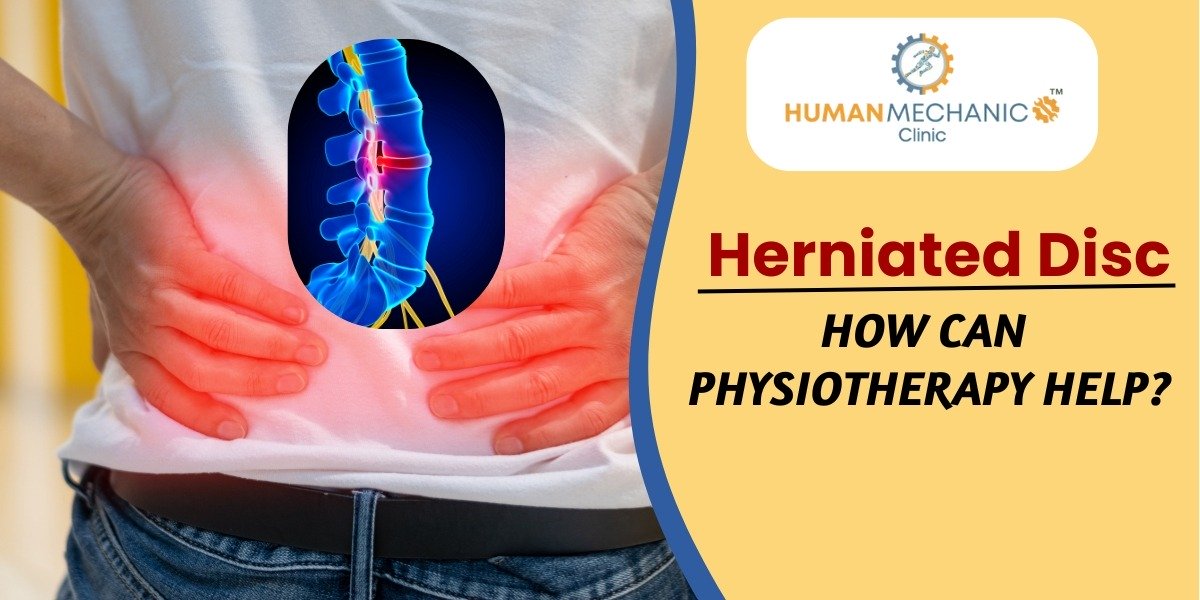How Can Physiotherapy Help For Herniated Disc?
A herniated disc, also known as a slipped or ruptured disc, is a common condition that can lead to significant discomfort and restricted mobility. It occurs when the soft gel-like center of a spinal disc pushes through its tough outer layer, irritating nearby nerves. While it may sound daunting, physiotherapy offers an effective and non-invasive solution for managing the symptoms and promoting recovery. Below, we delve into how physiotherapy can help individuals with herniated discs regain their quality of life.
Understanding a Herniated Disc
The spine is made up of vertebrae cushioned by intervertebral discs that act as shock absorbers. When one of these discs herniates, the inner material protrudes, compressing surrounding nerves. This can lead to symptoms such as:
- Sharp pain in the back, neck, or limbs
- Numbness or tingling sensations
- Weakness in muscles
- Limited range of motion
If left untreated, the condition can worsen, making it vital to address the problem promptly.
Why Physiotherapy is a Key Treatment Option
Physiotherapy provides a personalized, non-surgical approach to treating herniated discs. By focusing on restoring strength, flexibility, and posture, physiotherapy not only alleviates pain but also prevents future complications. The benefits include:
- Pain relief through targeted techniques
- Improved mobility and flexibility
- Strengthened core muscles to support the spine
- Reduction in inflammation and nerve compression
Key Physiotherapy Techniques for Herniated Disc
1. Stretching and Flexibility Exercises
One of the primary goals of physiotherapy is to enhance spinal flexibility. Specific stretches can help relieve pressure on the affected nerves and improve mobility. Some commonly recommended stretches include:
- Cat-Cow Pose: Promotes flexibility in the spine.
- Child’s Pose: Relieves lower back tension.
- Hamstring Stretches: Reduces strain on the lower back.
These exercises are gentle and tailored to the patient’s level of comfort.
2. Strengthening Exercises
Strengthening the core and back muscles helps stabilize the spine, preventing further disc injuries. A physiotherapist may incorporate:
- Plank variations for core stability
- Pelvic tilts to strengthen lower back muscles
- Bridges to activate gluteal muscles
Consistent practice ensures better spinal support and reduced recurrence of symptoms.
3. Manual Therapy
Manual therapy involves hands-on techniques performed by a physiotherapist to alleviate pain and restore function. This may include:
- Soft tissue mobilization to reduce muscle tension
- Joint mobilization to improve spinal alignment
- Trigger point therapy to address muscle knots
Such techniques are especially effective in targeting the root cause of pain.
4. Postural Training
Poor posture often exacerbates herniated disc symptoms. Physiotherapists educate patients on maintaining proper posture during daily activities. This includes:
- Ergonomic adjustments for workplace setups
- Techniques for lifting objects safely
- Awareness of spinal alignment while sitting or standing
Proper posture minimizes unnecessary strain on the spine, speeding up recovery.
5. Traction Therapy
Spinal traction gently stretches the spine, reducing pressure on the herniated disc. This non-invasive treatment creates space between the vertebrae, alleviating nerve compression and pain.
6. Electrical Stimulation
In some cases, physiotherapists use Transcutaneous Electrical Nerve Stimulation (TENS) to block pain signals and promote blood circulation. This accelerates healing and provides immediate relief.
7. Heat and Cold Therapy
Alternating heat and cold applications can reduce inflammation and relieve pain. Heat relaxes muscles and improves blood flow, while cold therapy numbs the area and reduces swelling.
Benefits of Physiotherapy for Herniated Disc
Physiotherapy’s tailored approach ensures that each treatment plan addresses the specific needs of the patient. Some of the notable benefits include:
- Non-surgical pain management: Eliminates the need for invasive procedures in most cases.
- Prevention of recurrence: Strengthening exercises reduce the risk of future disc issues.
- Improved quality of life: Reduced pain and enhanced mobility enable patients to resume daily activities.
- Holistic care: Physiotherapy not only addresses the symptoms but also improves overall spinal health.
When to Seek Physiotherapy
If you experience persistent back pain, weakness, or numbness, it’s essential to consult a healthcare provider. A physiotherapist can assess your condition and design a customized treatment plan. Early intervention ensures better outcomes and faster recovery. Get professional physiotherapy treatment in Hadapsar at Human Mechanic Clinic.
Tips to Prevent Herniated Disc
While physiotherapy can treat herniated discs effectively, prevention is always better than cure. Follow these tips to maintain a healthy spine:
- Maintain a healthy weight: Excess weight adds strain to the spine.
- Exercise regularly: Focus on core and back strengthening exercises.
- Practice good posture: Keep your spine aligned while sitting, standing, or sleeping.
- Lift objects carefully: Bend at the knees and avoid twisting motions.
- Stay active: Prolonged sitting can lead to stiffness and disc issues.
Physiotherapy is a cornerstone in the treatment of herniated discs. By combining expert guidance with consistent effort, patients can achieve significant pain relief and long-term spinal health. Experience effective herniated disc treatment in Pune at Human Mechanic Clinic, where our expert physiotherapists provide personalized care to alleviate pain, restore mobility, and improve spinal health. Using advanced techniques such as manual therapy, strengthening exercises, and postural correction, we target the root cause of your discomfort to ensure long-term recovery

